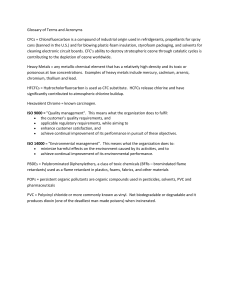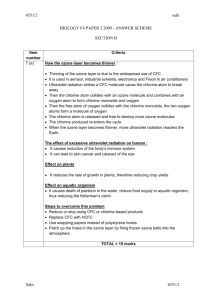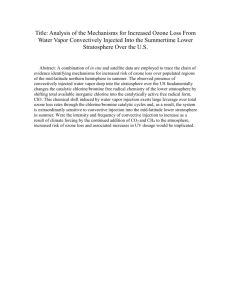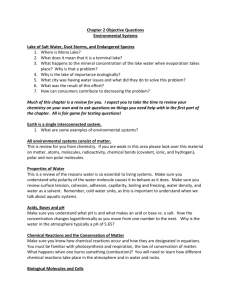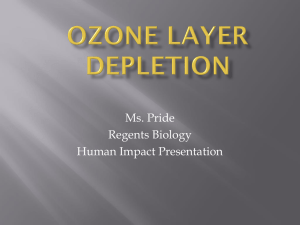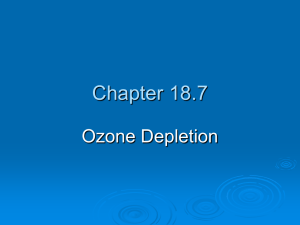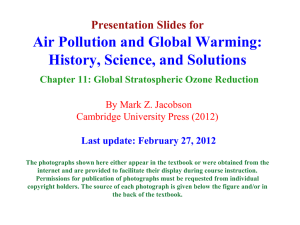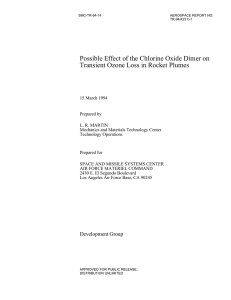H15-5 The Mechanism of Ozone Depletion - McGraw-Hill
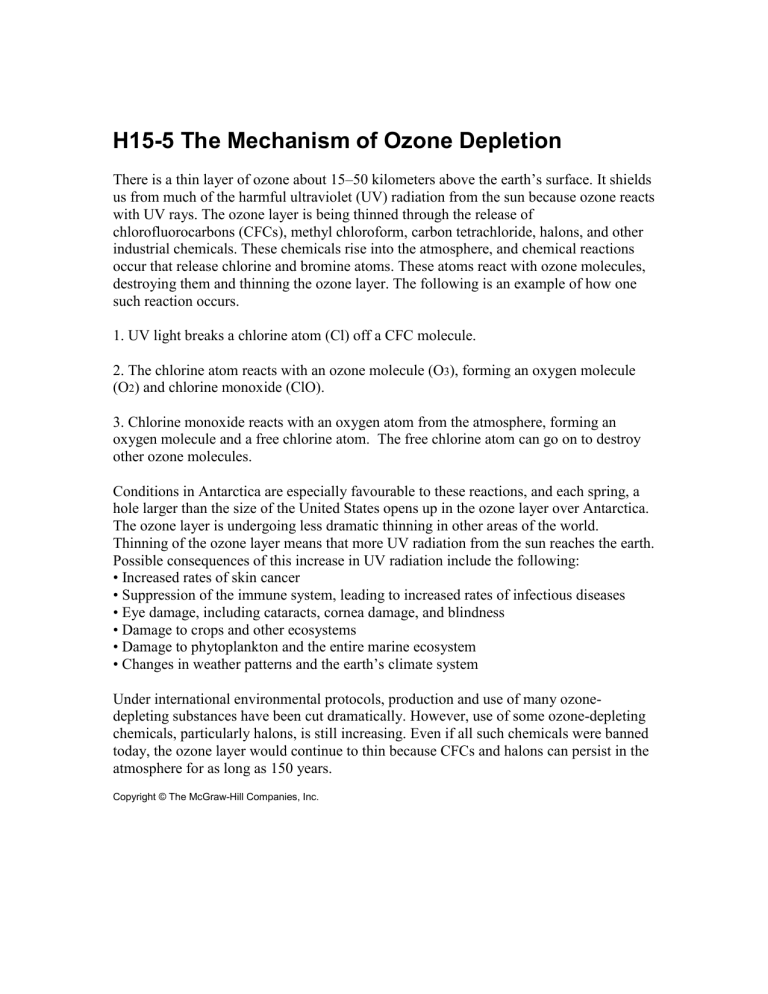
H15-5 The Mechanism of Ozone Depletion
There is a thin layer of ozone about 15–50 kilometers above the earth’s surface. It shields us from much of the harmful ultraviolet (UV) radiation from the sun because ozone reacts with UV rays. The ozone layer is being thinned through the release of chlorofluorocarbons (CFCs), methyl chloroform, carbon tetrachloride, halons, and other industrial chemicals. These chemicals rise into the atmosphere, and chemical reactions occur that release chlorine and bromine atoms. These atoms react with ozone molecules, destroying them and thinning the ozone layer. The following is an example of how one such reaction occurs.
1. UV light breaks a chlorine atom (Cl) off a CFC molecule.
2. The chlorine atom reacts with an ozone molecule (O
3
), forming an oxygen molecule
(O
2
) and chlorine monoxide (ClO).
3. Chlorine monoxide reacts with an oxygen atom from the atmosphere, forming an oxygen molecule and a free chlorine atom. The free chlorine atom can go on to destroy other ozone molecules.
Conditions in Antarctica are especially favourable to these reactions, and each spring, a hole larger than the size of the United States opens up in the ozone layer over Antarctica.
The ozone layer is undergoing less dramatic thinning in other areas of the world.
Thinning of the ozone layer means that more UV radiation from the sun reaches the earth.
Possible consequences of this increase in UV radiation include the following:
• Increased rates of skin cancer
• Suppression of the immune system, leading to increased rates of infectious diseases
• Eye damage, including cataracts, cornea damage, and blindness
• Damage to crops and other ecosystems
• Damage to phytoplankton and the entire marine ecosystem
• Changes in weather patterns and the earth’s climate system
Under international environmental protocols, production and use of many ozonedepleting substances have been cut dramatically. However, use of some ozone-depleting chemicals, particularly halons, is still increasing. Even if all such chemicals were banned today, the ozone layer would continue to thin because CFCs and halons can persist in the atmosphere for as long as 150 years.
Copyright © The McGraw-Hill Companies, Inc.

